9 Weird Things That Flew on NASA's Space Shuttles
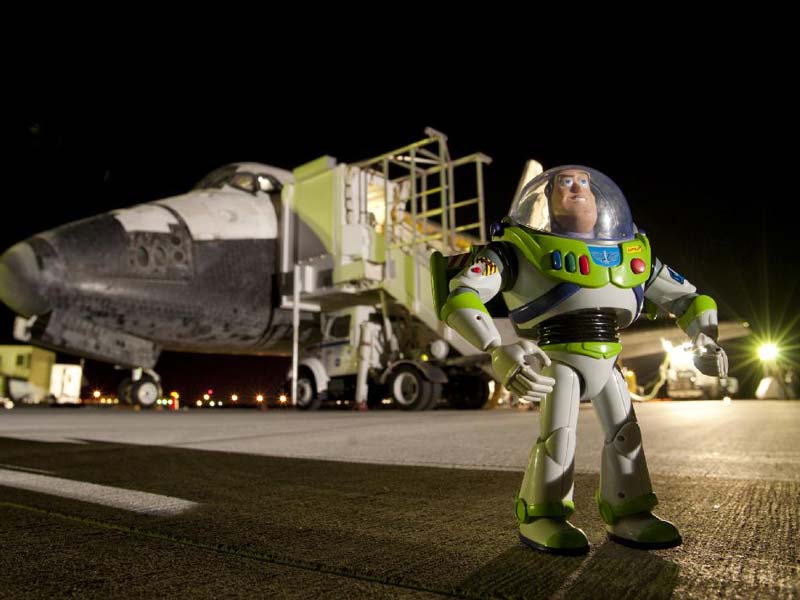
When NASA's space shuttles launch into orbit, they don't just carry astronauts and supplies into the final frontier. There's a lot of other weird stuff that makes the out-of-this-world journey, too.
NASA's last space shuttle mission will launch Friday, July 8 on the Atlantis orbiter to deliver spare parts to the International Space Station. The mission will be the 135th and last flight for the program, which began in 1981.
But over the course of 30 years, the space shuttles have flown some peculiar objects into orbit. The list of odd stuff that flew aboard the shuttles is a long one, and includes the Olympic torch, a replica of the golden spike from the First Transcontinental Railroad, and rocks from the top of Mount Everest and the surface of the moon, just to name a few.
Here nine recent space oddities carried into orbit on NASA shuttles:
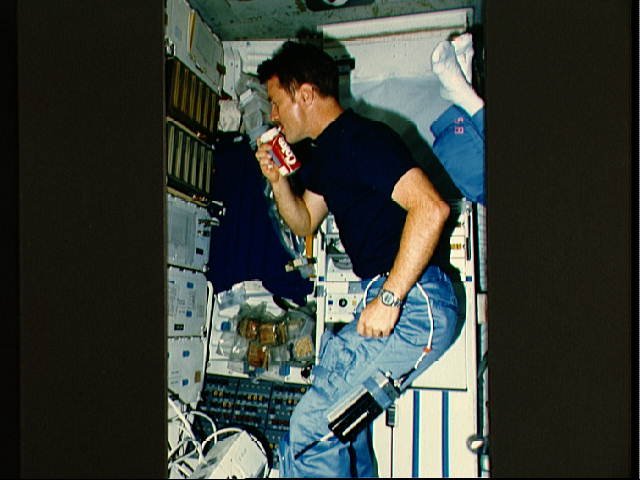
Cans of Coca-Cola & Pepsi
In 1985, special modified cans of Coca-Cola and Pepsi soda rode aboard the space shuttle Challenger on its STS-51F mission. The trip added more fuel to the so-called "Cola Wars" between the Coca-Cola Company and Pepsi, Co.
"Originally, only Coca-Cola was scheduled to fly," said Robert Pearlman, editor of collectSPACE.com, a website that tracks space-flown artifacts, and a SPACE.com contributor. "In addition to their desire to offer carbonated beverages for astronauts, Coca-Cola was also observing the effects of spaceflight on changes in taste perception with the goal of understanding altered tastes among target populations on Earth, such as the elderly."
Get the Space.com Newsletter
Breaking space news, the latest updates on rocket launches, skywatching events and more!
"When Pepsico Inc. learned Coca-Cola was aboard, they approached NASA to fly as well, and quickly devised their own shaving cream can-inspired design," said Pearlman.
The cans, which were officially dubbed the Carbonated Beverage Dispenser Evaluation payload, were part of an experiment by the two soft drink giants to test packaging and methods of dispensing the liquids in a microgravity environment.
At the end of Challenger's mission, however, the astronaut crewmembers deemed the experiment a failure due to the lack of refrigeration and insufficient protection from microgravity effects. [Most Memorable Space Shuttle Missions]
Coca-Cola later flew a dispenser specially designed for microgravity to give astronauts the opportunity to enjoy Coke and Diet Coke in space. The dispenser flew during the space shuttle Discovery's STS-63 mission in 1995. The beverages were dispensed into sealed drinking cups and the liquid was chilled on the spot using cooling coils attached to the storage container.
A second-generation dispenser was also flown on Endeavour's STS-77 mission in 1996. This version held Coke, Diet Coke and Powerade, an energy drink. The device, however, did not work as expected on orbit.
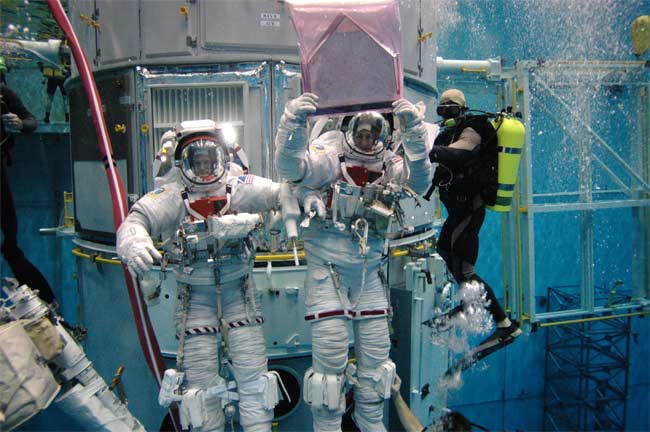
The New York Mets' Home Plate
In 2009, as the New York Mets organization prepared to move its baseball team into the new Citi Field in Queens, N.Y., a piece of hardware from the team's old home, Shea Stadium, made a special trip into space. On May 11, 2009, the home plate from Shea Stadium launched into orbit on the space shuttle Atlantis' STS-125 mission— the last trip to the Hubble Space Telescope.
"The only problem was the plate wouldn't fit as is into the shuttle's locker designated for memorabilia," said Pearlman. "Rather than leave it 'home,' Massimino was able to trim off the plate’s black-colored border using a razor, flying just the 'white part.' The two parts were reunited once the plate was back on the ground."
Astronaut Mike Massimino, a New Yorker and devoted Mets fan, brought the plate with him and his six crewmates on their mission to overhaul the aging Hubble Space Telescope. After journeying into space, the plate was returned to Earth, and Massimino was invited to throw out the ceremonial first pitch at a baseball game upon his return.
Shea Stadium in Queens's Flushing neighborhood was demolished after serving as the home of the Mets from 1964 until 2008. The Mets placed the flown plate on display in Citi Field, which opened its doors in the spring of 2009.
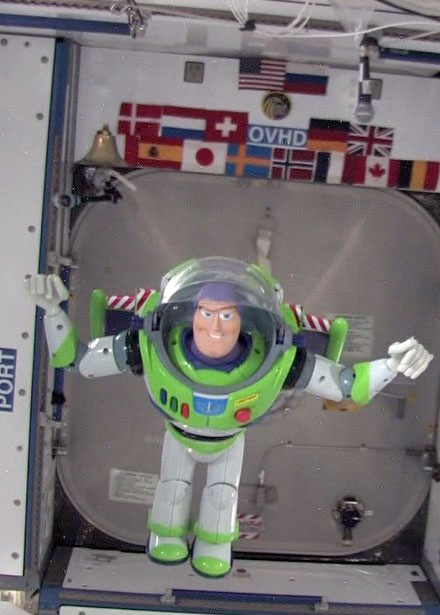
Buzz Lightyear – To Infinity and Beyond!
As part of an educational and public outreach mission, NASA teamed up with Disney to launch an action figure of the beloved character Buzz Lightyear, from Disney-Pixar's film "Toy Story," into space. A 12-inch tall Buzz flew to the International Space Station on Discovery's STS-124 mission in May 2008.
The intrepid figurine spent a whopping 468 days at the orbiting outpost, during which time he starred in educational videos as part of joint NASA and Disney outreach programs. After more than a year in space, Buzz hitched a ride back to Earth on Discovery's STS-128 mission, which landed at Edwards Air Force Base in California on Sept. 11, 2009.
On Oct. 2, 2009, the action figure was even treated to a ticker tape parade at Walt Disney World in Florida to celebrate the successful completion of his long-duration mission in space.
"Joining Lightyear for his hero’s welcome back to the 'Happiest Place on Earth' was his namesake, Buzz Aldrin. Disney asked permission to name the cartoon space ranger after the real moonwalker before the first ‘Toy Story’ movie was released in 1995," Pearlman said. [Photos of Buzz Lightyear's Disney Homecoming]
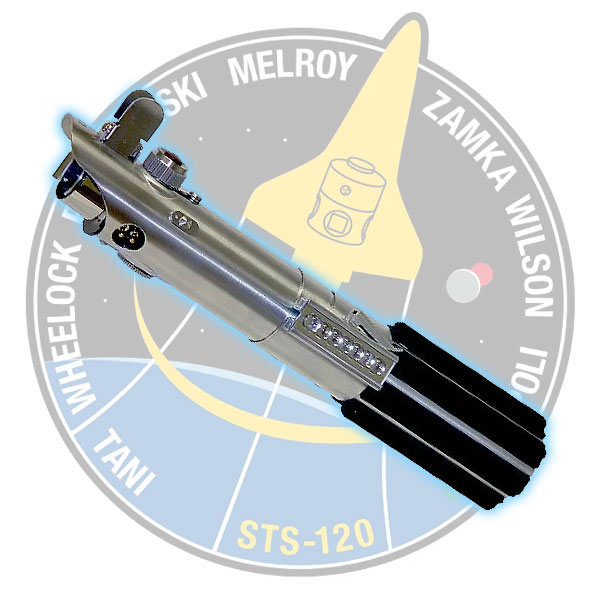
Luke Skywalker's Lightsaber
Fans of the iconic "'Star Wars" films celebrated a moment where fiction met reality, when a lightsaber prop from the sci-fi movies flew on the space shuttle Discovery's STS-120 mission.
"The lightsaber's flight was of particular interest to one STS-120 crew member, a self-described big 'Star Wars' fan who also woke during the mission to the theme from the movies," said Pearlman. "The song was chosen by Parazynski's son, who just happens to be named Luke."
One of Luke Skywalker's lightsabers was stowed onboard Discovery as it launched to the International Space Station to deliver a new module to the orbiting laboratory on Oct. 23, 2007. The prop was the original one used by actor Mark Hamill, who played Skywalker, in director George Lucas' 1977 film "Star Wars: Episode VI - Return of the Jedi."
The lightsaber flew to the space station and back to mark the 30th anniversary of the film franchise. Lucas was in attendance to watch the STS-120 launch, and at the end of the mission, the Jedi weapon was returned to him and his company, LucasFilm.
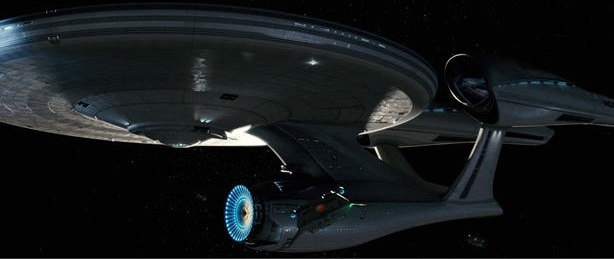
Ashes of Star Trek's Creator
In a fitting way to immortalize Star Trek's creator, Gene Roddenberry, some of the sci-fi legend's ashes were flown in a small capsule on the space shuttle Columbia's STS-52 mission in 1992. Columbia delivered the tiny canister into outer space, where it orbited the Earth 160 times before being returned on the shuttle.
"To the best of everyone's knowledge, it was the first time that human remains were launched on a manned spacecraft," Pearlman said.
A portion of Roddenberry's ashes were also launched into space in 1997 by the Houston-based firm Celestis, Inc., which offers a range of memorial spaceflight services. The remains of Roddenberry, who died in 1991, journeyed into the cosmos along with 23 other peoples' ashes in the company's debut Founders Flight, aboard an Orbital Sciences Pegasus rocket.
Roddenberry's wife, Majel Barrett Roddenberry, died in 2008, and her ashes, along with some of her husband's, will be launched on Celestis' Voyager Memorial Spaceflight Service, which is slated for 2012.
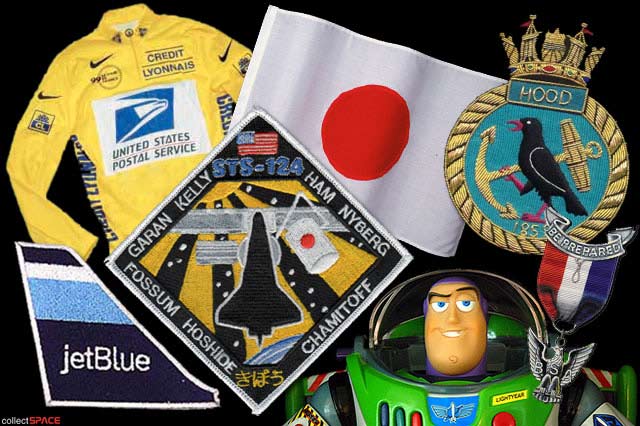
Sports Jerseys of All Kinds
Astronauts, like anyone else, have their favorite sports teams and players. As a result, many spaceflyers have chosen to show their team spirit by taking jerseys into space with them.
In just one example, Discovery's STS-124 astronauts represented a mixed bag of team allegiances. Among the items flown on Discovery, which launched on May 31, 2008, was the last game-worn jersey from Craig Biggio, a former second baseman, catcher and outfielder for the Houston Astros. Biggio played his entire 20-year career for the Astros and made his final Major League Baseball appearance on Sept. 30, 2007 before retiring from the sport.
A back-up Super Bowl XLII jersey belonging to New York Giants quarterback Eli Manning also made the journey aboard Discovery. Manning and the Giants defeated the New England Patriots to win Super Bowl XLII in 2008, and Manning was named the game's Most Valuable Player.
Four of Discovery's STS-124 astronauts hail from the New York/New Jersey area, which is home to the Giants, and NASA's astronauts all live and train for their missions at Johnson Space Center in Houston, located south of the Astros' home, Minute Maid Park.
“Not all flown jerseys came from ball-involved sports. STS-124 astronaut Karen Nyberg took with her one of cyclist Lance Armstrong's yellow Tour de France jerseys,” said Pearlman.
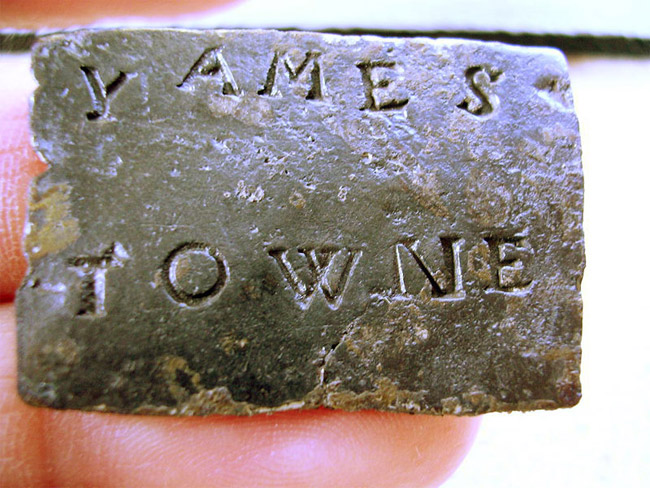
Jamestown Colony Cargo Tag
A small piece of history, in the form of a metal cargo tag from the Jamestown colony, flew aboard the space shuttle Atlantis on its STS-117 mission in June 2007. The historic tag was unearthed at Jamestown, the location of the first permanent English settlement in the Americas in 1607.
Essentially a colonial version of a modern-day luggage tag, the plaque, which is etched with the name of its destination, "Yames Towne," was likely used to mark merchandise that had been stored in London before being shipped, according to the Historic Jamestowne website.
The marker effectively logged more than four million miles over the course of four centuries, traveling first from England to the early American settlement, and then, 400 years later, to the International Space Station and back.
NASA flew the cargo tag with four commemorative coins on Atlantis to honor early American explorers. The historic metal piece was returned to Historic Jamestowne at the end of the flight for display in a museum.
"The same flight that launched the Jamestown tag also carried notable metal tokens of another type — Monopoly board game pieces," said Pearlman. "The game pieces came from the “Here & Now” edition of the popular real estate game, which featured a property square for NASA's Johnson Space Center in Houston, Texas."
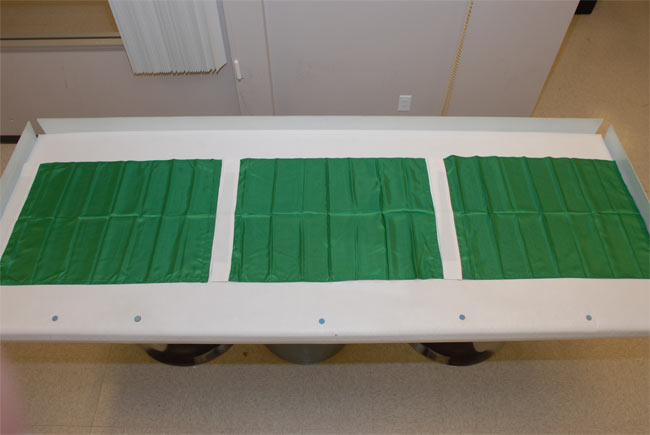
NASCAR Starter Flags
As the final minutes ticked down toward Atlantis' launch on its STS-122 mission on Feb. 7, 2008, it may have been more appropriate for NASA's launch director to state, "gentlemen, start your space shuttle main engines." After all, the orbiter was taking three NASCAR starter flags with it on its flight into space.
Three green starter flags were packed on the shuttle in celebration of the agency's 50th anniversary and the 50th year of NASCAR's Daytona 500 race. Atlantis deliver the European science laboratory, Columbus, to the International Space Station.
After an 11-day flight, the flags were returned to Earth. One was presented to Ryan Newman, the winner of the 2008 Daytona 500. The second was placed on public display at the Florida racetrack, and the third was kept by NASA as a special commemorative piece.
"Just one of Atlantis' main gear tires, on which the NASCAR flags landed, could carry the load of the entire starting line-up of a NASCAR race — 40 race cars — all hitting the pavement at 250 miles per hour," Pearlman said.
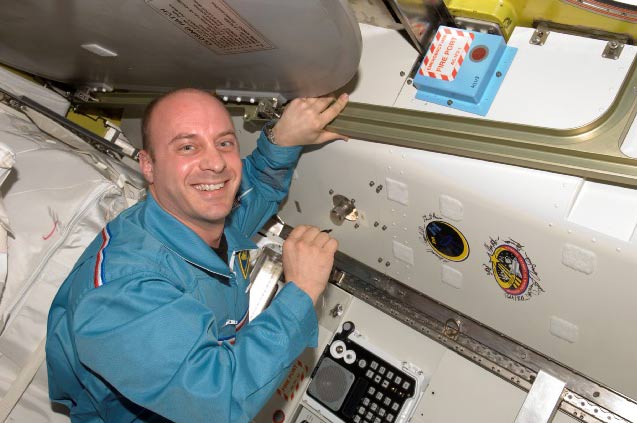
Dirt from Yankee Stadium
A vial of dirt from the pitcher's mound at Yankee Stadium, the home of Major League Baseball's New York Yankees, flew on the space shuttle Endeavour's STS-123 mission in 2008.
Astronaut Garrett Reisman , a fervent Yankee fan, brought the small container of dirt with him, along with other mementos of his favorite team, including a banner and hat autographed by George Steinbrenner, who was the principal owner of the team for 37 years, from 1973 to his death in July 2010.
In a cosmic first, Reisman threw out the ceremonial first pitch via video from the International Space Station prior to the start of the Yankees' game versus the Boston Red Sox on April 16, 2008. Reisman's pitch in microgravity was the first one from space in Yankee Stadium's history.
"Launching on the space shuttle and living aboard the International Space Station is a once-in-a-lifetime experience," Reisman said at the time. "But as a lifelong Yankees fan, throwing out the first pitch at a Yankees-Red Sox game is also a once-in-a-lifetime experience. I am really honored to have this opportunity in such a historic season in the House that Ruth Built, and I would like to thank the Yankees for being so supportive of our mission up here in space. From Earth's orbit, but still deep inside the Yankees Universe, let me say, 'Go Yanks!'"
You can follow SPACE.com Staff Writer Denise Chow on Twitter @denisechow. Visit SPACE.com for complete coverage of Atlantis's final mission STS-135 or follow us @Spacedotcom and on Facebook.
Join our Space Forums to keep talking space on the latest missions, night sky and more! And if you have a news tip, correction or comment, let us know at: community@space.com.

Denise Chow is a former Space.com staff writer who then worked as assistant managing editor at Live Science before moving to NBC News as a science reporter, where she focuses on general science and climate change. She spent two years with Space.com, writing about rocket launches and covering NASA's final three space shuttle missions, before joining the Live Science team in 2013. A Canadian transplant, Denise has a bachelor's degree from the University of Toronto, and a master's degree in journalism from New York University. At NBC News, Denise covers general science and climate change.









